Opened 18 years ago
Closed 18 years ago
#81 closed bug (fixed)
Eagle radiometric calibration mismatch
| Reported by: | mggr | Owned by: | mggr |
|---|---|---|---|
| Priority: | immediate | Milestone: | 2007 data processing completion |
| Component: | az* programs | Keywords: | |
| Cc: | Other processors: |
Description (last modified by mggr)
This ticket is spawned from #74 (support ticket for Rachel Gaulton, who found this problem). See that ticket for the initial work, summarised here.
Eagle's calibrated spectral profile on flights appears to differ substantially from CASI in terms of the measured radiance. The shape is the same but the numbers are different by a factor of approximately 4-8, depending on the pixel chosen.
Short history to date:
- 16/Oct Initial problem report from Rachel (2006 dataset)
- 18/Oct AKW recommended investigating on a known dataset
- 22/Oct Picked 166/2007 boresight flight and confirmed we're also seeing this issue
- 29/Oct Demonstrated to Gary and agreed routes for investigation
Attachments (15)
Change History (41)
comment:1 Changed 18 years ago by mggr
- Status changed from new to assigned
comment:2 Changed 18 years ago by mggr
- Description modified (diff)
comment:3 Changed 18 years ago by mggr
Flights with CASI and Eagle together (inc binning rates):
213-07/casi/
213-07/eagle/
- binning 2, 1
214abcd-07/casi/
214abcd-07/eagle/
- binning 2, 1
217b-07/casi/
217b-07/eagle/
- binning 2, 1
219a-07/casi/
219a-07/eagle/
- binning 2, 1
219b-07/casi/
219b-07/eagle/
- binning 2, 1
boresight-2007_166/
- binning = {8, 2}
boresight-2007_254b/
- binning = {4, 1}
Conclusion: use boresight_166 (8,2), boresight_254 (4,1) and one of the IPY flights (2,1)
comment:4 Changed 18 years ago by mggr
These are very initial results and purely based on eyeballing pixels:
| Flight day | Binning | Notes |
| boresight 166, line 1 | binning = {8, 2} | Variable scaling difference, around 5-7x |
| IPY 219, line 1 | binning = {2, 1} | Very similar shape but peaks a little lower and troughs a little higher? |
| boresight 254, line 1 | binning = {4, 1} | Similar-ish numbers (within a factor of 2 at worst), but the high end of the spectrum looks different |
Binning = {spectral, spatial}
comment:5 Changed 18 years ago by mggr
comment:6 Changed 18 years ago by mggr
comment:7 Changed 18 years ago by mggr
comment:8 Changed 18 years ago by mggr
Looks like the 254 with the strange shaped spectral profile was being corrupted by nearby pixels - doing the other tests on a larger surface (roof of a building) gives spectra looking very similar in shape and value.
The 4,1 and 2,1 spectra seem ok - only the 8,2 appears to be funny. Checking Rachel's flight (2006/195c), that was 2,2. Tentatively, it may be a problem with spatial binning > 1. Going to need to check a bit further, but Bill should know about this - I remember he was very unkeen on particular binning rates.
comment:9 Changed 18 years ago by mggr
Dropped Bill an email explaining the above to see if he knows about it.
comment:10 Changed 18 years ago by mggr
Spoke to Bill on the phone, who says that some of the Specim code for doing the calibration looks a little odd (sums pixels with dividing through after). One would expect the error to be closer to a factor of 2, but it's hard to pin down.
Actions:
- Bill will have a look at the source and see if anything looks really wrong
- Mike to make sure Bill has a copy of the 166 boresight flight to play with
- Mike to go through and try and pick out better comparison pixels, in larger numbers, and see if we can get an accurate overall difference between the spectra
comment:11 Changed 18 years ago by mggr
Attached a spreadsheet with detailed comparisons on selected pixels. There appears to be (very) approximately a factor of 6 between Eagle and CASI numbers.
comment:12 Changed 18 years ago by mggr
Bill has been going through the code with Jukka at Specim - it seems likely, though not yet confirmed, that Caligeo uses different code to that which Bill was originally given by Specim. This may account for the error.
Date of Eagle radiometric calibration is now the week of the 17th Dec.
comment:13 Changed 18 years ago by mggr
Jukka@Specim has processed the same eagle file with Specim software.
The file is a radiometrically corrected BIL, sourced from the raw data and calibration we're using (so should be identical) but produced with the AISATools software.
I've had a peek at it with ENVI and compared against the CASI flight again and Jukka's Eagle numbers are definitely in the right range and the spectral shape fits the CASI. Interestingly, the lower end of the spectral range is better shaped too.
I've attached a picture of the comparison - I'm pretty sure I'm hitting the same pixel in both Eagles. I'll do a more quantative comparison later, but thought this would be useful food for thought.
comment:14 Changed 18 years ago by mggr
FWHM (http://en.wikipedia.org/wiki/Full_width_at_half_maximum) changes around 750nm (a little) and 550nm (more substantially).. possibly this could account for the difference in the lower end on AZ output, but it's not very well aligned..
comment:15 Changed 18 years ago by mggr
- Component changed from Processing: Eagle to az* programs
- Summary changed from Eagle radiometric calibration investigation to Eagle radiometric calibration mismatch
- Type changed from task to bug
Concluding this is problem in azspec's handling of spatial binning > 1. The cause appears to be incorrect code being supplied to Bill by Specim in 2005/6.
As far as data delivery goes, we should probably hold onto Eagle spatial binning = 1 files for a short while longer - these don't seem to be greatly affected but Bill has a suspicion that the variance of bandwidth across the CCD isn't handled correctly, so there may be a minor variation at the blue end of the spectrum.
comment:16 Changed 18 years ago by mggr
Confirmed issue on calibrated light source at Kidlington, including the issue at the blue end.
Two ways forward, both should be pursued:
- fix azspec calibration (this requires support from Specim)
- attempt workaround using caligeo to do the radiometric calibration, then reimport back into azgcorr compatible form
comment:17 Changed 18 years ago by mggr
(belated updates)
The steering committee has been informed about this (10/11 Dec) and supports giving Specim a nudge.
Jukka and Bill have subsequently communicated a little more, with Jukka sending a binary copy of the AISATools package and re-examining source code (no outcome). This has allowed some additional testing by Bill, but we still really need a fuller explanation of the camera processing or the source code of the AISATools correction (which Jukka has promised). Possibly forthcoming in the new year..
comment:18 Changed 18 years ago by mggr
8-10/Jan: Jukka mailed Bill relevant source and this enabled Bill to find the major problem in azspec (a line of code had moved outside a loop). azspec now produces output of the correct magnitude. However, the shape change at one end (red? blue) of the spectrum is still present, as above. Bill is continuing to investigate this.
comment:19 Changed 18 years ago by anee
comment:20 Changed 18 years ago by anee
Changed 18 years ago by anee
AZ CASI vs. Caligeo Eagle vs. New AZ Eagle vs. Old AZ eagle boresight flight 254
comment:21 Changed 18 years ago by anee
comment:22 Changed 18 years ago by mggr
comment:23 Changed 18 years ago by mggr
Missing entry from first week of Feb. The newest azspec now has a fix to the smear correction. Here's a summary of the problem from an email sent to AKW (by mggr):
Once that was solved, the second problem was that the signal via azspec drifted off at one end of the spectrum. This appears to be due to a problem in the smear correction (as rows of data are shifted down the CCD, you have to remove a proportion of the value due to light accumulating on the CCD as the pixels are shifted). There was an unusual multiplier in Jukka's smear correction that he'd not told Bill about (due to the spectral binning being done in the camera?), so Bill's result would drift off as one got towards the end of the CCD and the error accumulated. Bill eventually discovered this by enabling and disabling features in AISATools (same algorithm as caligeo) and demonstrating the difference was in the smear correction, then discovering it was a fixed multiplier difference (spectral binning - 1?), whereupon Jukka was able to confirm..
comment:24 Changed 18 years ago by mggr
Looking like this may be fixed.. Ben has sent Rachel her 195a (& soon c) data processed with azspec, so if she's happy with it, we're probably good :)
comment:25 Changed 18 years ago by anee
comment:26 Changed 18 years ago by mggr
- Resolution set to fixed
- Status changed from assigned to closed
After some further comparisons and discussion, we're calling this fixed.
Eagle & Hawk processing can now be completed. Gary will notify PIs.
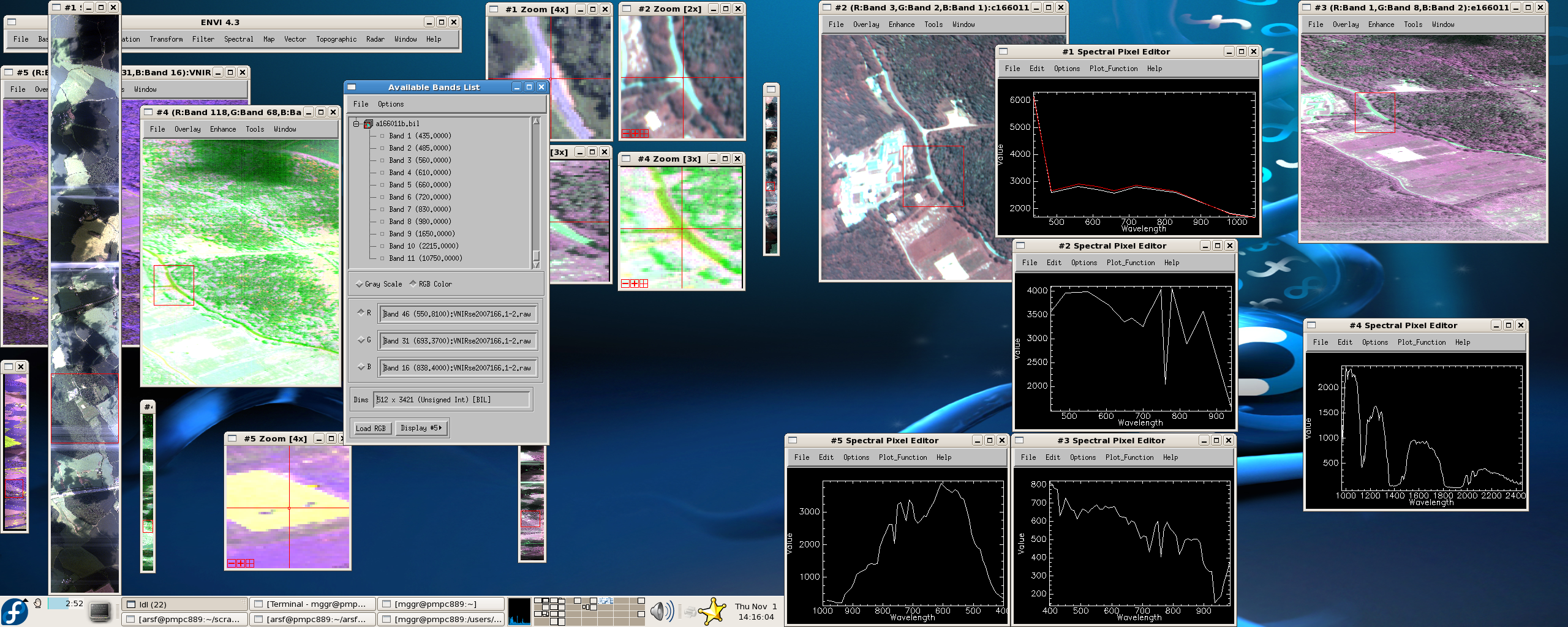
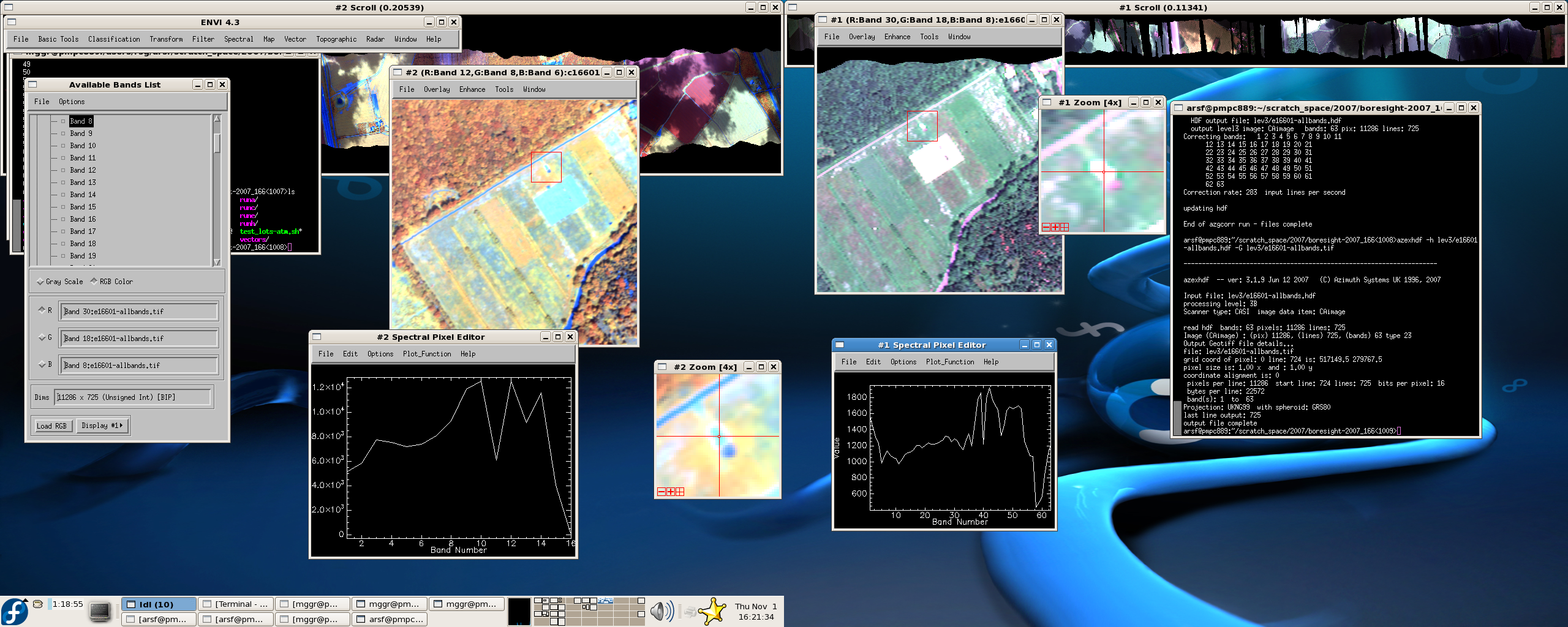
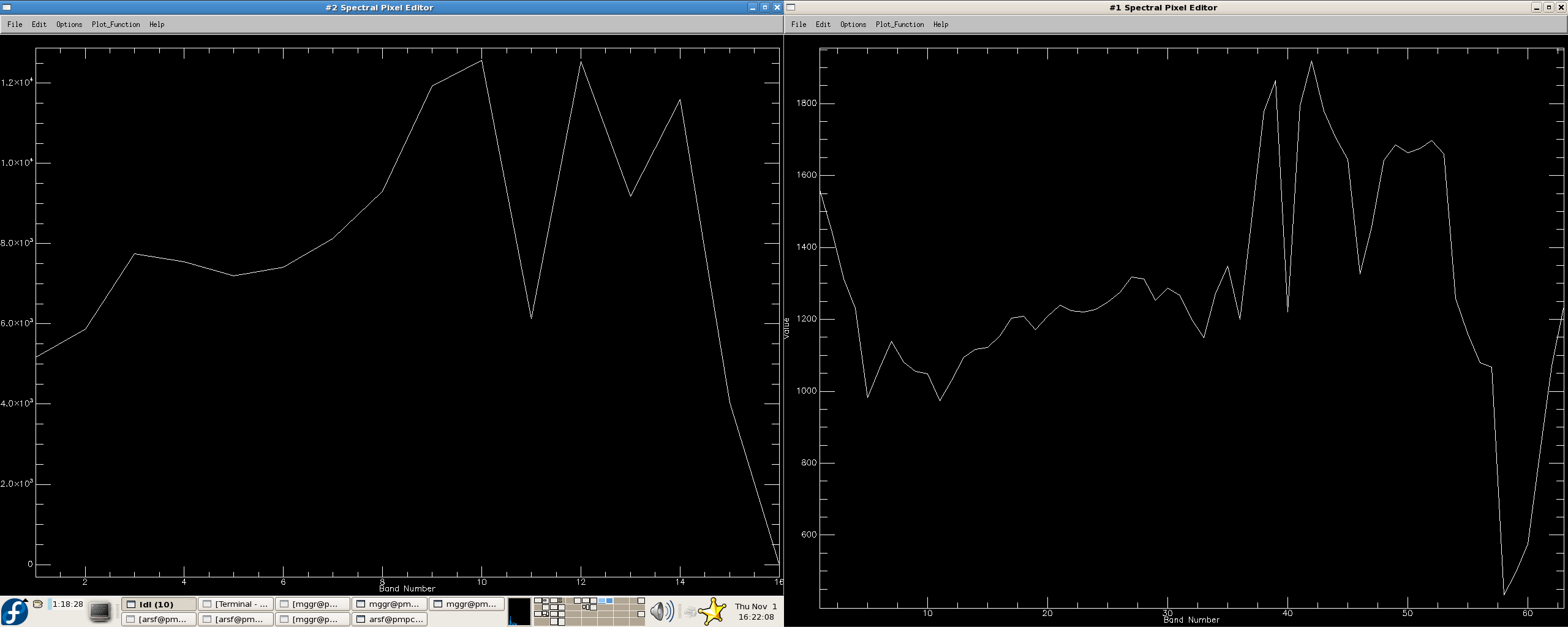


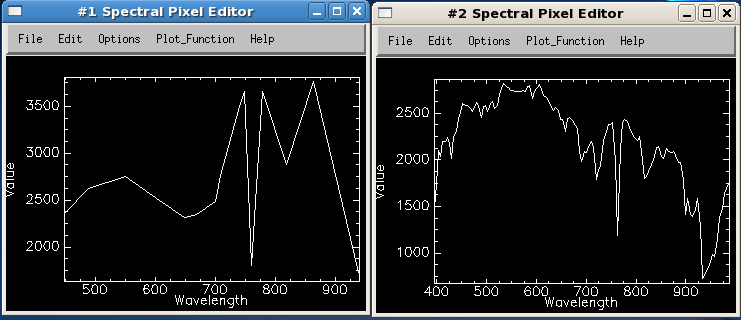
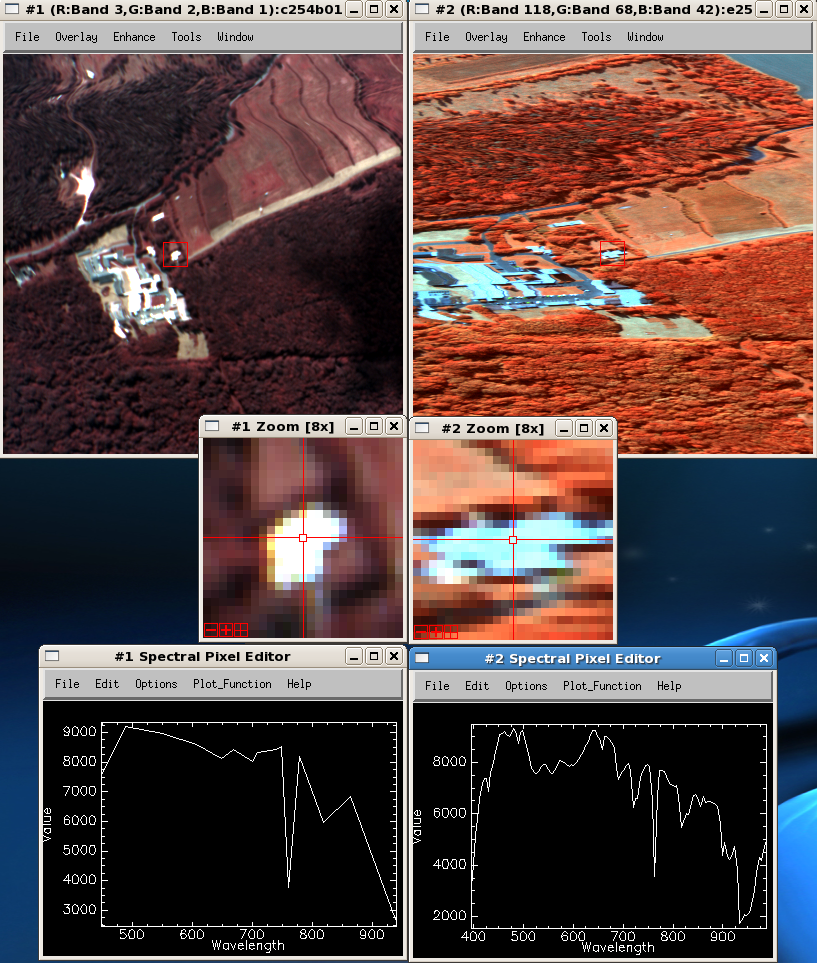

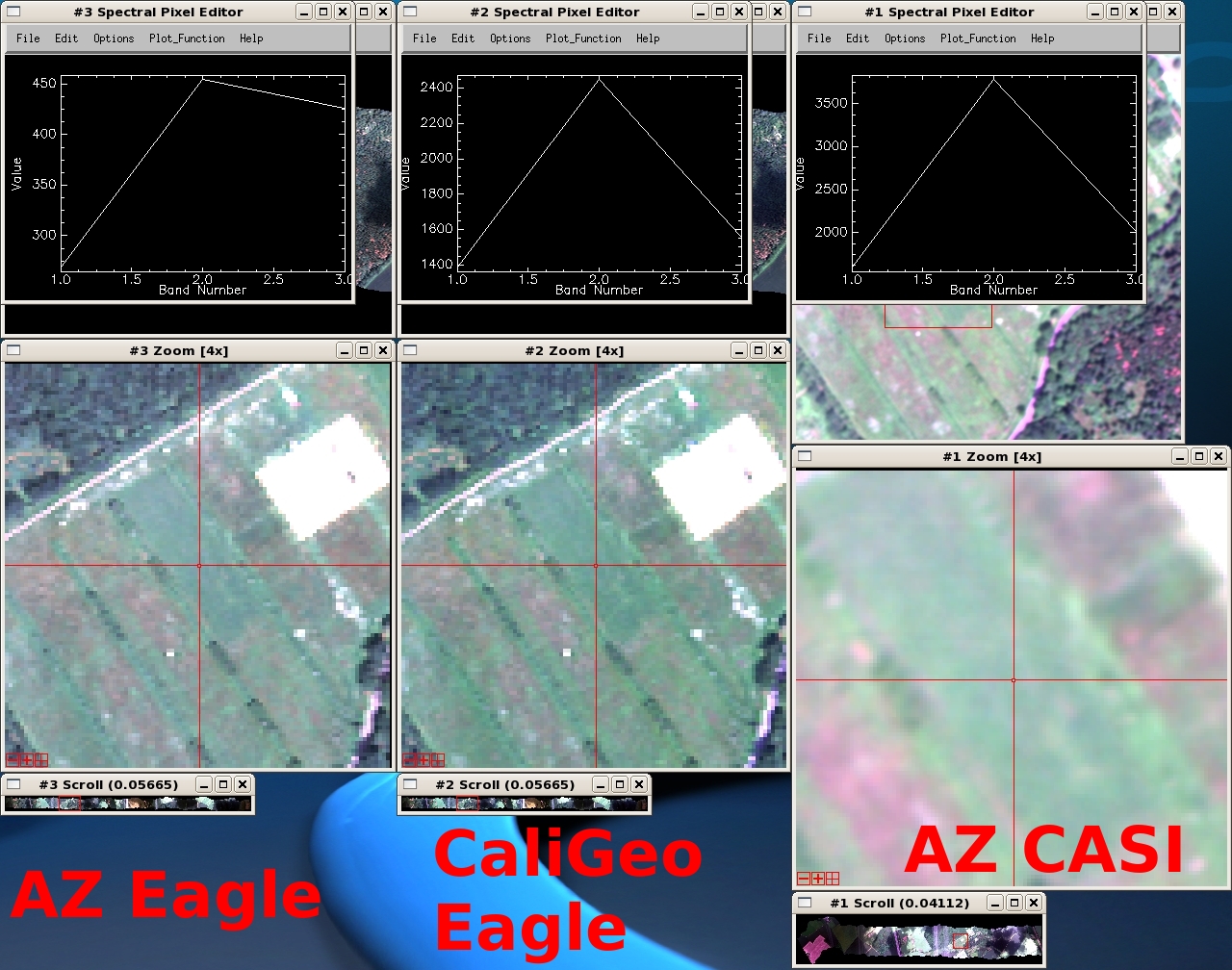


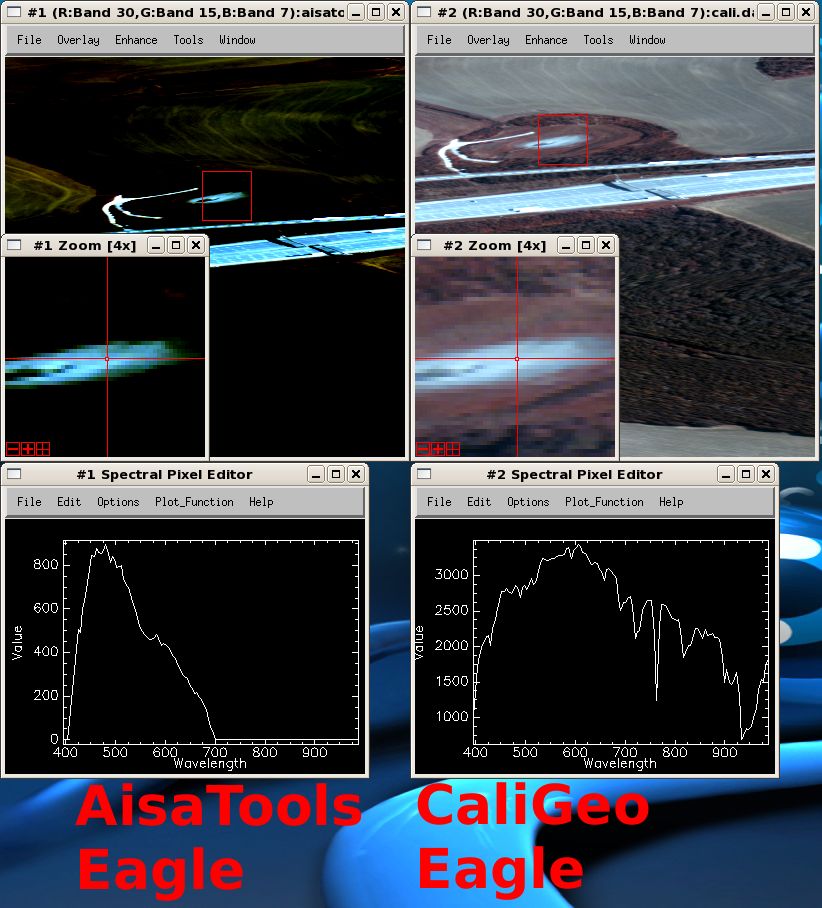
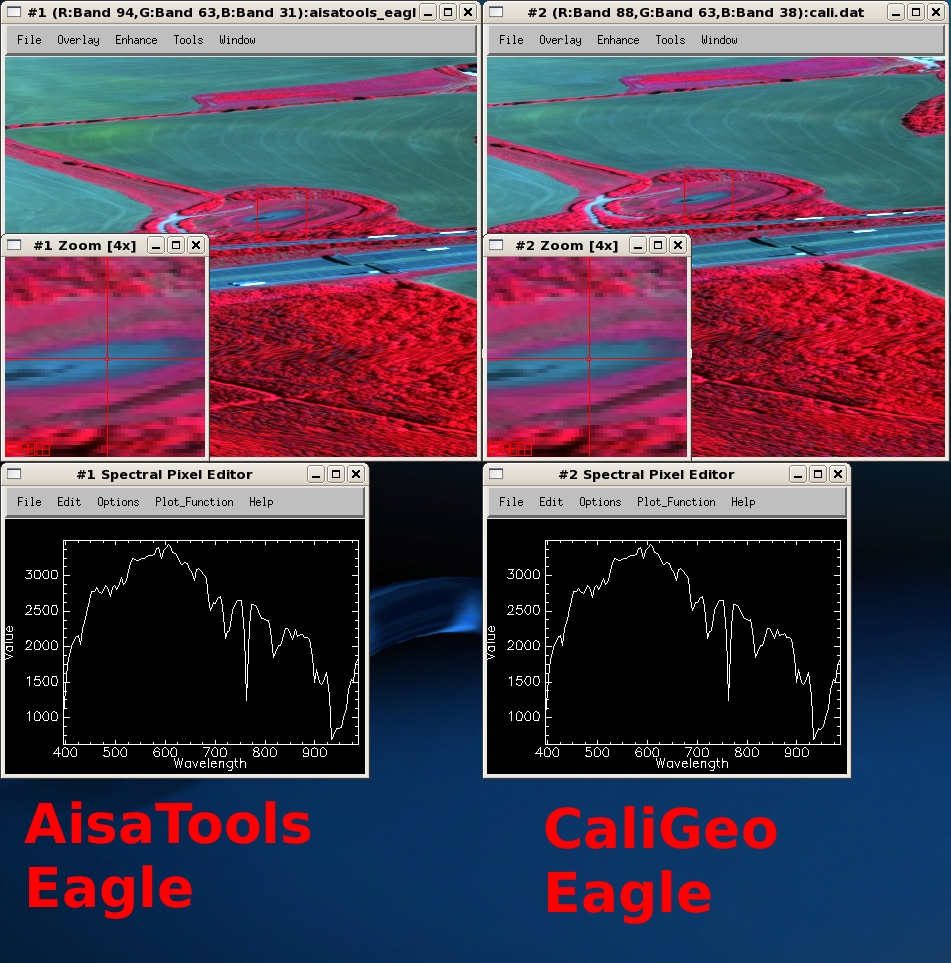
Routes of investigation: